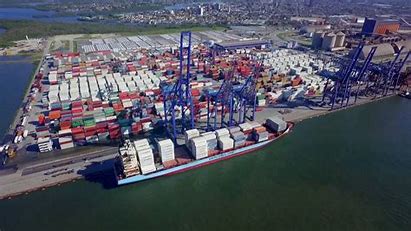Mars, PremierPet, Petz, Nestlé and BRF expanded operations recently
09/01/2022
/i.s3.glbimg.com/v1/AUTH_37554604729d4b2f9f3eb9ad8a691345/internal_photos/bs/2022/A/B/Z3xEWBR4OocTzgZ3tIUw/01emp-100-pet-b1-img01.jpg)
Mars had already injected R$165 million to build the Ponta Grossa facility — Foto: Divulgação
Mars, owner of the brands Pedigree, Whiskas and Cesar, has joined the recent wave of investments in the pet food market, which totaled R$2.5 billion since last year. The U.S.-based manufacturer will invest R$200 million in a new plant focused on the production of wet food for dogs and cats in Ponta Grossa, Paraná.
The company had already injected R$165 million to build the facility. The plant, the company’s fourth focused on pets, is expected to be finished in the first quarter of 2024.
In June 2022, PremierPet, owner of the Golden and Premier brands, started operating its fourth plant, in principle for dry food, after injecting R$1.1 billion in the facility. In the same month, Petz’s Zee.Dog launched a natural food brand with a capital expenditure of R$10 million. A year earlier, Nestlé announced the construction of its second Purina factory in Brazil and injected R$1 billion to expand production of wet food as of 2023. Last year, BRF, which already owned Balance, acquired Rio Grande do Sul-based Hercosul, which makes the Biofresh brand, for an undisclosed value.
Although it has the potential to sell 8.3 million tonnes, given the size of the population of dogs and cats in the country, sales are currently around 3.7 million, according to the association of pet products industry Abinpet. This difference shows the potential for growth, the association’s head José Edson Galvão de França said.
The volume of pet food sold is expected to grow by 6.6% in 2022, faster than the Brazilian economy. Last year, the food segment alone accounted for 78% of the revenue of the pet industry, whose turnover totaled R$35.8 billion.
“This growth requires investment, there is no idle capacity in the industry. Today we are the second-largest manufacturer of pet food, second only to the United States,” said Mr. França, noting that sales could be higher, but home feeding is still common in the country.
This scenario, however, has been changing, according to data from consultancy Kantar. Before the pandemic, industrialized dog food had a 35.8% slice of the market, and in the 12 months through March they accounted for 43.8%. Home-cooked pet food represents 11% now, down from 15.9%. Kantar also said that the number of households with pets fell by almost 3% this year compared to 2021. “The economic crisis may explain this,” the consulting firm said.
With more than 14,500 square meters built – and forecast to reach 25,000 square meters in six years – the Ponta Grossa plant will expand the company’s production capacity. The company currently has facilities in Recife (Pernambuco), Mogi Mirim (São Paulo) and Descalvado (São Paulo). In addition, it has an industrial plant for snacks and chocolates, such as Twix and M&M’s, in Guararema (São Paulo).
Ponta Grossa was chosen for its proximity to suppliers of raw materials and the main distribution routes. The facility will employ 150 people at the beginning of the operation and 300 in five years. Initially, the unit will supply the domestic market, especially the South region, which accounts for 20% of the Brazilian market. But it will also export to South American countries. In 2021, exports grew 33%, to $412.5 million, and pet food accounted for 95% of sales.
Mars has two strong brands, according to Euromonitor: Pedigree, with 11.5% of the market, and Whiskas, with 5.4%. Besides these two, the new plant will produce wet food for the brands Cesar, Sheba, Optimum and Kiteekat.
“Mars sees the sachet category as large and important enough for us to launch a new plant focused exclusively on it,” said João Konstantinidis, chief manufacturing officer at Mars Petcare. The privately-held company does not disclose its revenues in Brazil, nor the share of wet food in sales.
In total sales, wet food is still small in volume in the dog category, which accounts for 85% of total sales. Dry food accounts for 98.7% of volume. But while dry food sold 0.4% less at the end of the 12 months through March, sachets grew 0.1%, Kantar said.
*By Raquel Brandão — São Paulo
Source: Valor International

/i.s3.glbimg.com/v1/AUTH_37554604729d4b2f9f3eb9ad8a691345/internal_photos/bs/2022/u/Q/z8QcIcSVAB8WoBFCWkog/050822clementefariajr-16.jpg)
/i.s3.glbimg.com/v1/AUTH_37554604729d4b2f9f3eb9ad8a691345/internal_photos/bs/2022/D/7/sLInDQQ56FFDg7M035QQ/weg-divulgacao-weg.png)
/i.s3.glbimg.com/v1/AUTH_37554604729d4b2f9f3eb9ad8a691345/internal_photos/bs/2022/J/L/GzohzEQzqxECZj7790Bg/audi-reproducao-instagram.png)

/i.s3.glbimg.com/v1/AUTH_37554604729d4b2f9f3eb9ad8a691345/internal_photos/bs/2022/u/s/z8lnPURFymQYn4AvOprw/12bra-100-marta-a4-img01.jpg)
/i.s3.glbimg.com/v1/AUTH_37554604729d4b2f9f3eb9ad8a691345/internal_photos/bs/2022/4/M/NzcHs5TBSxFCzADH1Q9Q/210921carlos22.jpg)
/i.s3.glbimg.com/v1/AUTH_37554604729d4b2f9f3eb9ad8a691345/internal_photos/bs/2022/W/I/n9GLYAQfu9B6gNOn18YA/16emp-100-ener-b1-img01.jpg)

